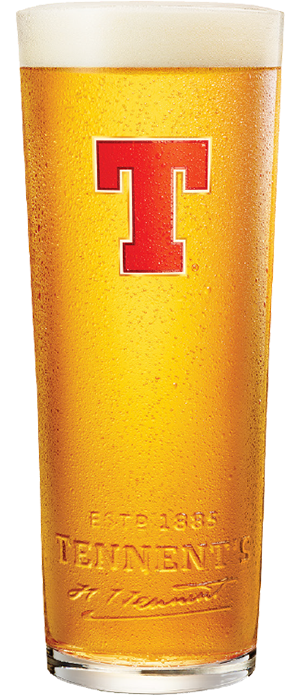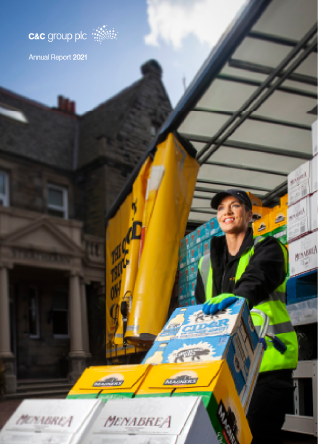
€m Great Britain Constant currency(iii) | FY2021 | FY2020 | Change % |
Net revenue | 206.8 | 325.2 | (36.4%) |
- Price / mix impact | | | (12.8%) |
- Volume impact | | | (23.6%) |
Operating (loss)/profit(vii) | (8.4) | 43.8 | (119.2%) |
Operating margin | NM | 13.5% | |
Volume – (kHL) | 2,007 | 2,626 | (23.6%) |
- of which Tennent’s | 690 | 977 | (29.4%) |
- of which Magners | 480 | 530 | (9.4%) |
Our Great Britain division’s net revenue decreased 36.4% to €206.8 million in the year driven by the closure of the on-trade and volume moving into the lower margin off-trade channel. As a result, operating profit has reduced by €52.2 million(iii) to a loss of €8.4 million. Despite the trading challenges the division has made considerable steps towards strengthening its portfolio; optimising its cost base and positioning itself for emerging trends.
Wellpark Brewery remained open with minimal levels of disruption from COVID-19. We responded to the immediate switch in consumption dynamics to the off-trade and met the exceptional demand for our off-trade SKUs, which outperformed the market, whilst also maintaining the demand for our contract brewing and private label partners. We have continued our commitment to ESG with £7 million capital investment to remove single use plastic in our products, which will be completed in 2021. In addition we have installed CO2 capture and storage facilities, significantly reducing the need to purchase CO2. Further, we are a founding member of Circularity Scotland, affirming our commitment to the creation of an efficient and well-designed Deposit Return Scheme for Scotland that delivers the recycling and litter objectives and supports the country’s ambitions for a more circular economy.
We ensured support for our on-trade customers putting in place measures that included: flexibility on credit terms; collection of old kegs and replacing them with new kegs; back to trade planning including, ranging, promotions and moratoriums on capital loan book repayments. As a response to the trend in customers moving towards ordering online, we continued the development of our ecommerce offering for the Tennent’s business in Scotland, enhancing our customer experience with the introduction of a new ordering platform. This platform provides improved functionality including an optimised ordering journey, a direct link to online support via web chat and the ability for the customer to self-manage their trading account, including the option to pay open invoices and apply credit notes. We believe orders will continue to move online as we further enhance our ecommerce offering. We forecast by the end of FY2022 that on-trade online orders will make up 70% of the revenue for the business in Scotland.
Significant work has been completed on the secondary distribution network in Scotland, rationalising its footprint and associated cost base. As a result, a new 50,000 square foot depot has been established in Edinburgh, Scotland’s second largest city where Tennent’s had no presence before. On the opening of the Edinburgh depot, we will close four existing depots in Scotland, including Matthew Clark’s Glasgow depot, creating one final-mile logistics solution which will be fully operational by June 2021. This will yield ongoing efficiencies, improve customer service and optimise working capital by lowering overall stock levels. Our convenience direct to store model utilises this network, established in part following minimum unit pricing, and has performed strongly with overall volume growth of 70% versus FY2020. The growth has been aided by the development of an online platform and retailer loyalty scheme which also provides trade information, point of sale and incentives.








